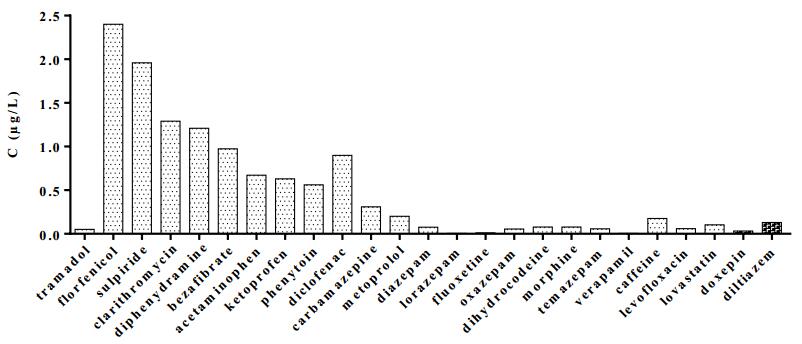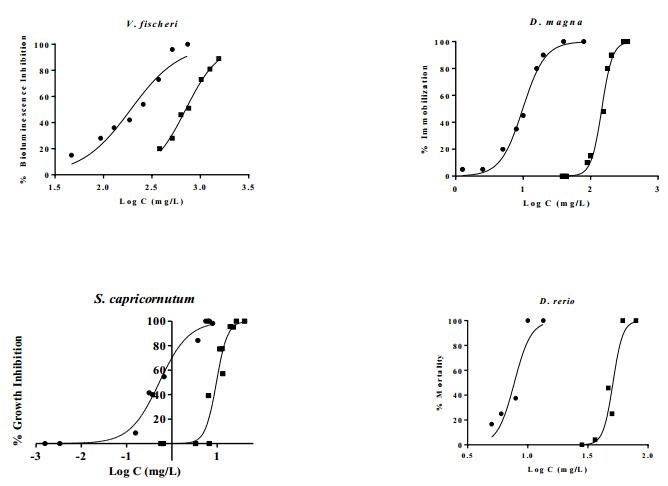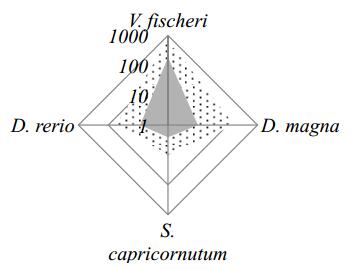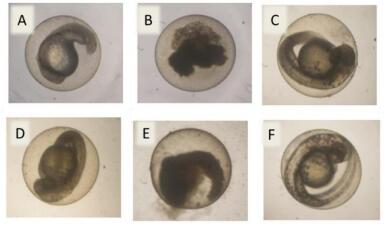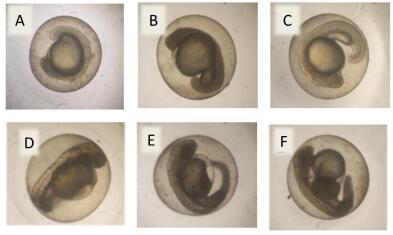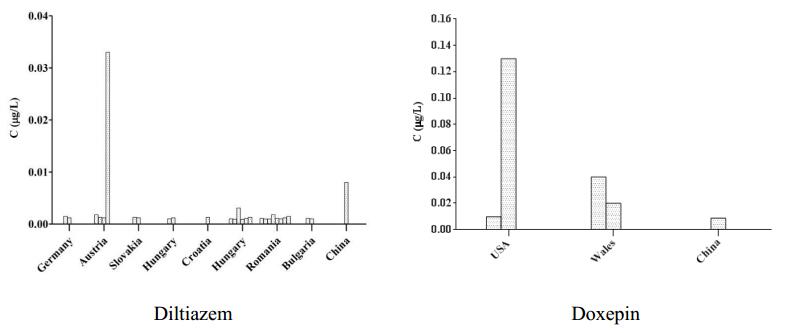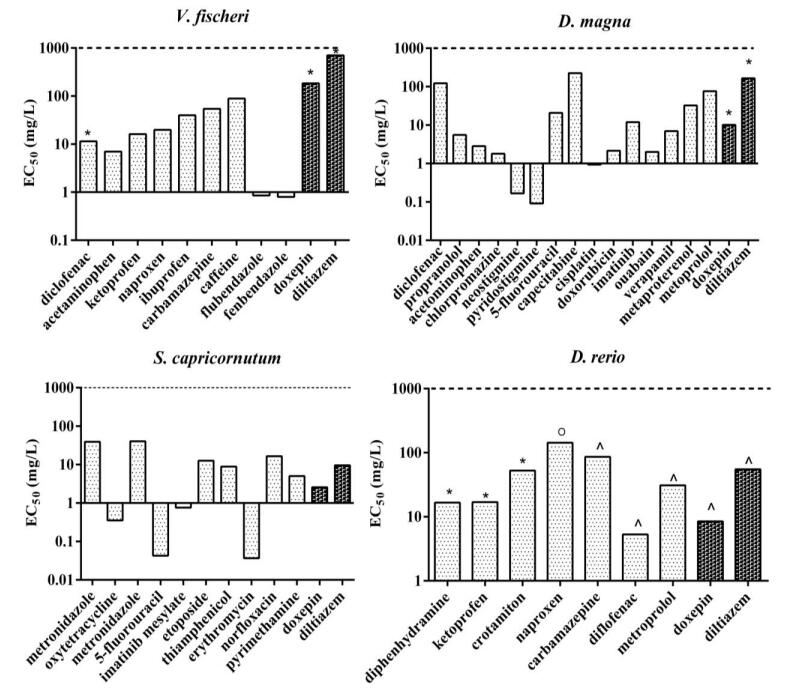1. Introduction
Major advances in induced pluripotent stem cells (iPSCs) methods and lineage-specific differentiation protocols are driving the use of iPSC to develop human disease models. Since Yamanaka et al. [1] reported reprogramming somatic cells to iPSCs, the ability to differentiate iPSC to most somatic body cell types has revolutionized the ability to study cell specific function and to model disease in vitro. The previous source of pluripotent cells was human embryonic stem (ES) cells and their use carries bioethical concerns. Scalable sources of cardiac cells, from biopsy or donated hearts that are not transplantable, are rare [2]. Human iPSCs are easily in vitro differentiated primarily into ventricular cardiomyocytes with relatively high efficiencies. Studies of a number of genetic cardiomyopathies have shown that iPSC derived cardiomyocytes can recapitulate in vivo human phenotypes such as impaired calcium handling, be employed in drug assessment by multi-electrode arrays (MEA), and capture altered sodium and potassium channel activity [3,4,5]. These types of studies will, potentially, identify the metabolic basis for human cardiomyopathy, distinguish new diagnostic metabolic biomarkers and identify metabolic pathways for pharmacologic and dietary intervention. Studying cardiac disorders in vitro, utilizing iPSC-derived cardiomyocytes is growing and many syndromes have been approached using this technology.
Several advantages are offered by iPSC derived cardiomyocytes over the limited capability of primary cardiomyocyte cultures from mice or rats that may not faithfully model human cardiac diseases. Stem cells are self-renewing, thus, iPSCs can be used to provide an unlimited supply of differentiated cardiac cells. More importantly, iPSCs and their differentiated derivatives recapitulate the genotype of the patient donor. Thus, iPSCs obtained from patients with lesions in specific tissues contain the mutations and demonstrate the functional deficits seen in the patient. Cardiac iPSC research is not only providing cellular insights but iPSC derived cardiomyocytes are a scalable source for investigating novel translational research avenues and to evaluate pharmaceuticals and toxicology [2].
2. Genetic basis of cardiac disease
A large number of gene products are needed for normal cardiac function and recent investigations reveal multiple genomic mutations are pathologic in both sporadic and familial heart disease. Advances in high-throughput sequencing technologies confirmed the high incidence of pathological genomic mutations in both familial and sporadic cardiomyopathies [6]. The Framingham Heart Study data suggest that about 18% of heart failure in patients is attributable to a heritable component [7]. Yet, there remain many forms of cardiac disease where contributing genetic defects need to be unraveled. In some cases, technological limitations have hindered defining the genetic contribution to clinical disease because of small cohort size or rare familial mutations. Several studies have used genome wide association studies (GWAS) and next-generation sequencing to expand the catalog of known genes driving cardiometabolic disease [8,9,10,11]. In a recent study of 639 well characterized cardiac patients [12], genes such as plakophilin-2 (a desmosome protein in cardiac intercalated discs), myosin-binding protein C-3 (associated with cardiac sarcomeres), and desmoplakin (found in desmosomes that facilitate cell-cell adhesion) were among the most common cardiomyopathy mutations uncovered. Other cardiomyopathy proteins implicated in dysfunction were variants of titin, ryanodine receptor 2, desmocollin-2 and desmoglein (other desmosome proteins) and a voltage gated sodium channel, SCN5A. When defective, these proteins may represent overlapping dysfunction between dilated cardiomyopathy (DCM) and channelopathies. The Haas et al. [12] study reported finding that 38% of investigated patients had compound mutations and that 12.8% of this patient population had three or more mutations. As more mutations are revealed and found to be causal for various cardiomyopathies, cardiometabolic cell models will be needed to aid in defining the dysfunctions linked to these genes. Patient derived iPSCs alone or combined with CRISPR/Cas9 technologies can be used to confirm known genetic defects in cardiometabolic disease, to discover and elucidate new and/or novel pathological mechanisms contributing to human cardiac disease or, perhaps, to repair cardiac disease in situ. This paper reviews these technologies and provides examples of iPSCs used to model selected cardiac disease.
3. Generation of induced pluripotent stem cells (iPSC)
Human cardiomyocytes obtained by patient biopsy for primary culture are difficult to maintain and have a short life time. Thus, investigations of cardiac disease are thwarted by the lack of available in vitro models. iPSC-derived cardiomyocytes have been rapidly implemented as an alternative source of defined cardiac cells for in vitro disease modeling but also for pre-clinical drug testing and safety pharmacology [13,14,15,16,17,18,19]. iPSCs are a useful tool for modeling many human diseases but are particularly attractive for post-mitotic cells like neurons where Alzheimer's disease [20] and Amyotrophic Lateral Sclerosis (ALS) [21] have been modeled and for cardiomyocytes where muscular dystrophy (DMD) in the heart [22] and long QT Syndrome [23] models are reported. Easily accessible somatic cells can be reprogrammed to iPSC and then differentiated to the tissue of interest. If the cells are patient samples, they retain patient mutations in their genomic context, and likely, display the associated cell function deficit. In addition, the iPSCs are a renewable source of the model cells and allow investigations of human specific pathology that have proven to be superior to animal models. Lastly, iPSC derived cardiomyocytes avoid the bioethical issues posed by embryonic stem cells [24].
Induced pluripotent stem cells are made by reprogramming somatic cells commonly obtained from patient blood or fibroblasts. Typically, peripheral blood mononuclear cells (PBMCs) or fibroblasts are cultured with the four Yamanaka reprogramming transcription factors, Klf4, SOX2, c-Myc and Oct4 [25] generally available from several suppliers. The reprogramming factors are delivered to the cells by episomal vectors, non-integrating Sendai virus or lentivirus. Within 26-30 days after reprograming, small iPSC colonies appear and once they reach a harvestable size are picked and singly cloned in 24 well plates. The growth medium optimally includes ROCK inhibitor (Y-27632) [26] for 24 h to assist the newly picked clones in growth and expansion. Each iPSC clone is characterized by staining for pluripotency markers that may include, Nanog, OCT4, SOX2, SSEA-4 and TRA1-60 or TRA1-81 [25,27]. In practice characterization can start with an in vitro alkaline phosphatase assay (AP Live) prior to harvesting clones or early in the iPSC clone expansion to confirm pluripotency. This allows the investigator to discard those clones that are not clearly pluripotent positives saving reagents and culture work downstream. Examples of iPSC clones stained for pluripotency are shown (Figure 1). Generally, 10-15 clones/cell line are picked to ensure a high-quality iPSC line is obtained after completing the expansion and characterization period. iPSCs are cryopreserved as small cell clumps to enhance their retrieval from thawing and ROCK should be included in culture for 24 h after thawing. Additional confirmation of iPSC generation includes assays to assess their ability to differentiate into all three germ layers (endoderm, mesoderm and ectoderm). This was initially done by injecting iPSCs into SCID mice looking for teratoma formation [27,28] but is now done by culture methods where the plated iPSCs are allowed to differentiate in medium formulated with the requisite growth factors for the desired tissue. The differentiated tissues obtained from iPSC are stained with primary antibodies for marker proteins unique to that tissue type, examples include Alpha Fetal Protein (AFP) for endoderm, smooth muscle actin (SMA) for mesoderm and synapsin for neural ectoderm (Figure 2). Finally, the iPSC clones are checked for mycoplasma contamination and/or other panels of human disease (information at http://www.idexxbioresearch.com/authenticate). A potential problem with iPSC lines is that they may develop trisomies or other chromosome aneuploidies with increasing passage numbers, consequently iPSC lines are authenticated by karyotyping chromosome abnormalities and STRs to confirm a single cell line source. Cell Line Genetics documented iPSC chromosome abnormalities by assessing over 17,000 independent lines of hESCs and iPSCs. The most common aneuploidies found are trisomies for chromosomes 1, 12, 17, 20 (see Cell Line Genetics Stem Check Probes at https://www.clgenetics.com/products/clg-stem-check-probes.html). It is suggested that newly derived iPSC lines be characterized in early passages to avoid downstream use of an aneuploid clone and checked after use to ensure the iPSC clone did not acquire chromosome abnormalities while in experimental use (see Figure 3).
4. Generation of cardiomyocytes from iPSC
Cardiomyocytes are produced using a defined medium differentiation protocol that supplies critical growth, signaling and inhibitory factors in a timed format (kits available from multiple suppliers). Briefly, iPSC cultures are dissociated and re-plated on matrigel coated 12-well plates at a cell density of 3.5×105 cells/well where the medium is supplemented with 10 µM Y-27632 (ROCK inhibitor). Once iPSCs reach > 95% confluency (approximately 2 days), the medium is changed to the sequential cardiomyocyte differentiation mediums. The iPSC cells are driven to differentiate towards mesoderm [29]; followed by additional mediums that direct the cells to become fully differentiated cardiac mesoderm. Additional media steps can reduce the heterogeneity of cardiac cells by lactate exposure [2]. Finally, the now differentiated cells are maintained in a cardiac maintenance medium. After approximately 15 days, the cardiomyocytes have formed a syncytium-like mass of cells that contract like cardiac tissue. The key to obtaining cardiomyocyte differentiation via medium additives requires control of BMP and Wnt signaling to enhance the efficiency of cardiomyocyte differentiation [30,31]. Beating cardiomyocyte areas can be selected and re-plated for a more homogenous cell population. Most commonly used cardiomyocyte protocols produce a mixture of pacemaker cells, atrial-like, and ventricular-like cells, with the ventricular-like cell population representing the largest fraction and the pacemaker cells the smallest cell fraction [2,30]. Confirmation of lineage specific cardiac marker expression, for example, cardiac transcription factors Nkx2.5 and GATA4 can be done by PCR. Both cardiac transcription factors participate in heart development and their presence demonstrates cardiac differentiation. Confirmation of cardiomyocytes can also be obtained from structural proteins expressed in heart tissue such as cardiac troponin 2 (TNNT2) and myosin heavy chain 6 (MYHCB) (Figure 4).
Potential limitations of iPSC derived cardiomyocytes are that the cells reflect early stage cardiac cells and that not all cardiac cell types may be obtained in sufficient quantity for study by current methodologies [30].
5. Rationale for CRISPR edited iPSC lines
CRISPR/Cas9 is a gene editing technique that has, in recent years, become the method of choice for introducing genomic changes in iPSC [32]. Cardiomyocytes are post-mitotic cells so to create disease models the most direct way is to produce iPSC with disease mutations, and then, differentiate to cardiac cells. Three methods are commonly used 1) derive iPSC from patient material (blood or skin fibroblasts are good choices) and then make cardiomyocytes, 2) if mutant patient material is not available, to CRISPR edit control iPSC for the desired disease mutations or 3) repair existing mutant alleles by CRISPR mediated intervention to create isogeneic controls [33]. These approaches allow the researcher to focus on phenotype in mutant and control lines. It is assumed that mutant alleles obtained from patient tissue donations are causative for disease, and thus, their pathological impacts can be evaluated after obtaining the iPSC derived cardiomyocytes. Repairing mutant iPSC via CRSPR and then employing them as isogenic controls removes substantial genomic heterogeneity inherent in the use of non-isogeneic cell lines. Introducing a known patient mutation into a control iPSC line and, subsequently, making cardiomyocytes can direct studies on whether the mutant allele under study is a causative genetic change specific for the disease under study [34,35,36]. The utility of the CRISPR editing approach is the relatively high rates of knockout lines obtained via NHEJ (approximately 10-15% reported) in control iPSC. CRISPR mediated homologous recombination to correct a mutant patient iPSC line to an isogenic mutant line is lower (estimated to be 2%) [33,37]. Other outcomes for these approaches may be 1) to create clinically applicable cardiac replacement cells for grafts and other applications, 2) to scale up cardiac cells for high through put drug evaluations and 3) to create new disease models that are inaccessible by other means [38]. Detailed CRISPR gene editing protocols, selection of gRNAs, screening methods and standard practices are found in [37,39].
6. Cardiometabolic diseases modelled using derived iPSC or CRISPR edited iPSC
iPSC derived cardiomyocytes are becoming an accepted model for studying cardiac disease as these cells more closely represent in vivo cardiac function. There are now many studies testing the hypothesis that iPSC-derived cardiomyocytes model clinical aspects of a patient's disease. A limited sample of these studies, focusing on monogenic diseases including cardiac channelopathies, shows the breadth of cardiac diseases approachable by iPSC methodology (see also reviews [13,40,41,42,43,44]).
6.1. Hypertrophic cardiomyopathy (HCM)
Jehuda et al. [43] studied patients containing a p. R302Q mutation in the gene PRKAG2. This gene codes for the γ-subunit of adenosine monophosphate kinase (AMPK) leading to symptoms of hypertrophic cardiomyopathy (HCM) and familial Wolff-Parkinson-White (WPW) Syndrome. The p. R302Q mutation alters AMPK protein activity that leads to an increase in cardiomyocyte glycogen storage. Symptomology in these patients includes sinus bradycardia, supraventricular tachycardia, and atrioventricular block. HCM patient iPSCs were generated and then used to derive cardiomyocytes. The cardiomyocytes showed abnormal electrogenic function and ultrastructural defects consistent with AMPK defects found in patient heart cells. Jehuda et al. [43] group then used CRISPR methods to correct the p. R302Q PRKAG2 mutation. The CRISPR repaired, isogenic iPSC cardiomyocytes showed both normal glycogen storage and electrophysiological function, confirming the ability to obtain fully functional cardiomyocytes from CRISPR mediated repair of a cardiac mutation in a single gene. Other cardiomyopathies modeled in iPSC derived cardiomyocytes include titin mutations in a familial dilated cardiomyopathy [45], diabetic cardiomyopathy [46], arrythmogenic right ventricular dysplasia (ARVD) with plakophilin-2 mutations [12] demonstrating the diversity and utility of iPSC methods to address hypertrophic cardiac disease.
6.2. Marfan Syndrome
Marfan syndrome (MFS) is a heritable connective tissue disorder caused by mutations in the fibrillin-1 (FBN1) gene that encodes a protein in the microfibrils of cardiovascular extracellular matrix. MFS is a systemic disease frequently presenting with tall stature, scoliosis, ocular lens dislocation and aortic aneurysm where aortic rupture can prove fatal. Granata et al. [47] generated an iPSC vascular model to investigate the pathogenesis of aortic aneurysms in MFS. iPSC-derived smooth muscle cells (SMCs) modelled the pathology seen in Marfan aortas, including defects in fibrillin-1 accumulation, extracellular matrix degradation, transforming growth factor-β (TGF-β) signaling, contraction and apoptosis. In subsequent studies, FBN1 mutations were corrected by CRISPR/Cas9-based gene editing. Pharmacological TGF-β inhibition rescued abnormalities in fibrillin-1 accumulation and matrix metalloproteinase expression. This model [47] enables dissection of molecular mechanisms contributing to MFS pathology, can identify novel cellular targets for therapy and provides an innovative human platform for evaluating therapeutics to treat MFS.
Many MFS models rely on animal studies or post onset human samples, in a study conducted by Park et al., [48] skin cells obtained from a MFS patient with a nonsense mutation (p. R861X) in FBN1 were reprogrammed to iPSC. The same cells were TALEN gene corrected to produce an isogenic control line. Since FBN1 expression levels are negligible in iPSC, these MFS cell sets were differentiated to mesenchymal stem cells and smooth muscle cells (SMCs) to examine FBN1 levels. Upon analysis, the FBN1 levels in the MFS cells was 3-4 fold lower than the isogenic corrected controls [48]. Microfibrils in MFS cells were fragmented compared to control cells with an increased TGF-β phenotype as seen in MFS patients. iPSC derived SMC expressed two SMC markers alpha-smooth muscle actin (SMA) and calponin. RT-PCR confirmed other markers of smooth muscle differentiation (such as ACTA2, VE-CAD1 and SMTN) in both MFS and control cells validating the MFS model. Using a carbachol based assay [49], the MFS cells were evaluated for contractile capability. Contractile capability was reduced by 25% in the MFS cells. Finally, an analysis of the differential transcriptome of the two cell types found that genes associated with inflammation were upregulated and genes associated with cell adhesion properties were downregulated [48]. These experiments confirm the pathogenic role of FBN1 mutations in MFS.
6.3. Pompe disease
Pompe disease is a lysosomal storage disease resulting from an autosomal recessive deficiency of acid alpha-glucosidase (GAA) that results in lysosomal glycogen build-up. Clinical symptoms of Pompe are skeletal muscle weakness, respiratory failure and cardiac hypertrophy. Lysosomal accumulation of glycogen contributes to autophagic dysfunction, endoplasmic reticulum stress and changes in calcium signaling within skeletal muscle. Pompe is reproduced in several iPSC-derived cardiomyocyte models and successfully replicates the disease phenotype. Huang et al. [50] showed that iPSC derived cardiomyocytes recapitulated pompe disease pathophysiology including high glycogen levels and significant changes to cellular ultrastructural. They showed l-carnitine treatment reduced defective cellular respiration in the diseased cells paving the way to evaluate drug rescue in these cells and potentially in patients. Sato et al. [51] noted that Pompe iPSC-derived cardiomyocytes have a unique metabolic pattern when compared to control cardiomyocytes. This metabolic change is characterized by higher amino acid and lactate levels and total glutathione content with a reduced carnitine content. Analyses of other metabolome profiles by mass spectrometry of late-onset Pompe iPSC-derived cardiomyocytes showed that oxidative stress and mitochondrial abnormalities are part of the cardiac dysfunction (also replicated in a Pompe Disease mouse knockout model [51]). In another study of Pompe employing iPSC derived cardiomyocytes, a Golgi-based glycosylation deficit was identified that may play a central role in the cardiac pathophysiology. This suggests that restoration of normal glycosylation processing may be of therapeutic value [52]. However, further studies are needed to more clearly define the how glycosylation deficits are linked to Pompe cardiopathology [50].
7. Channelopathies modeled in iPSC derived cardiomyocytes
Channelopathies are a set of single gene defects that alter one or more ion channel functions in the heart that leads to sudden cardiac death and/or debilitating cardiomyopathies. There are different classes of defects in the channel's proteins that result in disease—some by sequestering the protein in the ER or Golgi and others by malformed channels when the protein is located in the cell membrane. Many of these diseases have been approached using iPSC derived cardiac models. The cellular mechanisms that may underlie variable expressivity for cardiac channelopathies remain poorly understood, making it difficult to predict clinical outcomes based solely on the genetic abnormality present, however, iPSC derived cardiac models are being used to address potential mechanisms [44].
7.1. Timothy syndrome
Timothy syndrome (TS) is a disorder of the in the L-type calcium channel CACNA1C gene caused by gain-of-function mutations [53]. Patient's present with common cardiac phenotypes including an EKG QT interval between 480-700 ms and ventricular tachycardia, that often presage sudden death. TS lethal arrhythmias are potentially controlled with automated defibrillators, but there is essentially no effective treatment for the disease. Mouse models do not recapitulate some of the human symptomology, likely due to differences in mouse cardiomyocyte electrical activity. Thus, iPSC derived human cardiomyocytes present a better model [53]. Cardiomyocytes have voltage gated calcium channels expressed in the plasma membrane of these electrogenic cells. T-type and L-type calcium channels that regulate calcium signaling and contractility predominate in the heart. CACNA1C genetic mutations are associated with TS and result in deficits of excitation-contraction coupling producing the known lethal arrthymias. The first case of TS was described in 1992 and involved LQTS (type 8), congenital heart defects, and syndactyly (webbing of fingers and toes) [54]. The most common mutation, a p. G406A substitution in the alternate splice site of exon 8a, produces excess calcium influx after depolarization. The iPSC derived TS ventricular-like cardiomyocytes showed highly irregular spontaneously contracting cells. The TS cardiomyocytes also had larger and more prolonged transient Ca+2 signals consistent with patient phenotypes. In another study [55], iPSC from TS patients were corrected using TALENs to produce isogenic control iPSC, differentiated and compared to TS cardiomyocytes. These cardiomyocytes showed normal calcium transients and calcium inactivation parameters comparable to non-isogenic iPSC-derived cardiac controls. The TS cardiomyocytes were used to screen for compounds that are therapeutic for the syndrome. Twenty roscovitine analogs were screened and two were found to increase the spontaneous beating rate and decrease the contraction irregularity noted in TS cardiomyocytes. Another screen of CDK inhibitors, suggested that CDK5 may be involved the molecular pathology of TS [55]. Thus, iPSC derived cardiomyocytes are able to model cardiac dysfunctions seen in TS patients.
7.2. LEOPARD syndrome
LEOPARD syndrome (LS) is an acronym for its main features: Lentigines, Electrocardiographic abnormalities, Ocular hypertelorism, Pulmonary valve stenosis, Abnormal genitalia, Retardation of growth and Deafness. It is an autosomal dominant developmental disorder of RAS-MAPK signaling. LS mutants are catalytically impaired and have dominant-negative effects that inhibit growth factor-evoked ERK1/2 activation [56]. Mutations reside in the PTPN11 gene that encodes the tyrosine phosphatase SHP2 protein. SHP2 is required for normal development and expressed throughout the body's tissues. One of the major LS phenotypic findings is hypertropic cardiomyopathy affecting about 80% of the patients [57]. Investigators established two iPSC lines from patients harboring a heterozygous p. T468M mutation and a non-isogenic control iPSC line. Cardiomyocytes derived from LS iPSC lines demonstrated an increased median surface area compared to control iPSC cardiomyocytes. An increased sarcomere assembly is also observed in LS cardiomyocytes when compared to control cells. The calcineurin-NFAT pathway is implicated as an important regulator of cardiac hypertrophy. Active calcineurin dephosphorylates NFAT transcription factors, resulting in their nuclear translocation. Using immunocytochemistry methods, the study authors observed a higher proportion of LS cardiomyocytes with nuclear NFATc4, (∼80% versus ∼30%, respectively) [57].
7.3. Hereditary atrial fibrillation (KCNA5 channel)
The KCNA5 channel, encoding an atrial specific Kv1.5 current, is implicated in hereditary forms of atrial fibrillation affecting about 1% of the general population. Atrial fibrillation (AF) increases with age and develops secondary to other conditions (hypertension) placing a significant health burden on global societies. Marczenke et al., [58] explored the potential for defining atrial vs. ventricular cardiomyocyte sub-type specific disease, employing a timed retinoic acid differentiation protocol (atrial sub-type specification) and a CRISPR generated KCNA5 knockout. They generated cardiomyocytes from a wildtype male iPSC line after creating a homozygous 76 bp deletion KCNA5 knockout representative of a heterozygous, dominant mutant documented in a patient case of loss AF. The wildtype (WT) and KCNA5 mutant cells were then differentiated into WT-atrial cells, WT-venticular cells, KCNA5-atrial cells and KCNA5-ventricular cells and tested for functionality. Cardiac marker testing showed Kv1.5 current was detected only in the RA treated atrial cells and not the ventricular sub-type cells. This finding implies an atrial specific phenotype for hereditary loss AF. The study authors further report beat interval differences between the mutant atrial cell type and the WT-atrial controls. Drug testing, using single cell patch clamp assays, identified an atrial specific response when the Kv1.5 current was missing. This study reflects the use of RA timing to differentiate atrial and ventricular cardiomyocyte specific regions that separates atrial specific cardiomyocyte responses from other heart regions. In the future, the capability to study cardiac cell specific functions assist in elucidating region-specific channel activities, the diseases implicated and potential channel drug targets.
7.4. Brugada syndrome
This is another autosomal dominant channel defect estimated to be responsible for 20% of sudden cardiac deaths [4]. Brugada patients present with ventricular tachycardia, bradycardia, and atrial ventricular node conduction disorders. There is a distorted sex ratio of cases with more males than females determined to have Brugada syndrome. Selga et al. [4] produced cardiomyocytes made from iPSC that came from a patient carrying a heterozygous missense mutation (p. R367H) in the SCN5A sodium channel as reported in several Brugada patients [59]. The homozygous p. R367H mutant has been studied in other models such as HEK cells and Xenopus oocytes [60] where complete loss of the sodium current was shown. Heterozygous Brugada cardiomyocytes were analyzed by patch clamp recordings and showed a 33-45% loss of function of the sodium channel current and other associated voltage dependence changes compared to non-isogenic control cardiomyocytes [4]. These results illustrate the ability of patient-specific iPS cell technology to model the abnormal functional phenotype of Brugada syndrome.
7.5. Long QT syndromes
LQT1, an exercise induced arrhythmia, is most commonly caused by variants in the KCNQ1 gene resulting in disruption in the slow delayed-rectifier potassium current (IKs). Moretti et al., [61] generated iPSCs from an LQT1 patient with a p. R190Q mutation and differentiated them into cardiomyocytes. They determined that the levels of KCNQ1 protein were similar between control and affected cardiomyocytes but noted that p. R190Q LQT1 cardiomyocytes localized mutant KCNQ1 protein in the endoplasmic reticulum. This represents a cellular trafficking defect for KCNQ1 rather than an ion channel function defect. This study also showed a prolonged repolarization in the cardiomyocytes. This cardiomyocyte model validated LQT1 drug evaluations when these cardiac cells recapitulated β-agonists and β-blockers responses. Isoproterenol blunted the expected reduction in longer AP duration and development of early after depolarizations (APD) that was reduced by the administration of propranolol.
Long QT 2 (LQT2) results from a defect in another potassium channel found in the heart. It is frequently seen in KCNH2 mutants (also called hERG) creating an abnormal rapid cardiac delayed-rectifier potassium current (IKr). Patients who develop ventricular arrhythmia or sudden cardiac death from a response to auditory stimuli most commonly have LQT2. An LQT2 iPSC-derived cardiomyocyte model caused by a known missense mutation in KCNH2 (p. A614V) was generated from patient cells [62]. Similar to the LQT1 model, the iPSC-cardiomyocytes exhibited a prolonged APD and field potential duration (FPD) at both the single cell and tissue levels. In addition, the cells exhibited a reduced IKr current supporting the proposed LQT2 mechanism that the prolonged repolarization is caused by the loss of function of rapid-acting inward-rectifying potassium channels. The authors of this study found that at the multicellular level, 38% of LQT2 iPSC-cardiomyocytes exhibited ectopic single and multiple triggered beats, the same mechanism hypothesized to result in the ventricular arrhythmia of torsades de pointes (TdP) frequently seen in LQT2 patients. Chai et al., [63] studied a large family with several individuals showing variable expressivity of LQT2 syndrome. Affected family members had a hERG missense mutation (p. R572W). Affected iPSC derived cardiomyocytes compared to unaffected familial controls were used to evaluate functional cardiomyocyte deficits that recapitulated the patient's pathology. This group also identified two new disease modifying gene variants that may explain the disease variability in this family. One is a gain of function variant in the KCNK17 channel (mutant p. S21G) and the other a REM2 mutant (p. G96A), found in the Ras superfamily. The REM2 p. G96A variant was found in all (100%) severely-affected-familial members but in only 23% mildly-affected-phenotype patients. The KCNK17 seemed to lessen the severity of the disease [63]. These defects were tested in cardiomyocytes and other cell systems to confirm the observed effects. So, while many of the channelopathies are considered “one gene, one disease” entities, the findings reported by Chai et al., [63] reveal the genetic complexity seen in patient phenotypes and reveal the role of two, newly described, modifiers of LQT2 syndrome [64]. Other LQT variants have been investigated in iPSC cardiomyocytes such as LQT3 [65].
8. Advantages and Limitations of iPSC derived cardiometabolic models
Many cardiac conditions have been modeled in non-cardiac cells, such as HEK293 and Xenopus oocytes, by insertion of the recombinant channel protein to be studied [66,67]. A primary limitation of this approach is that these cells lack the functionality of human cardiomyocytes as these cells do not possess the coordinating effects of accessory channels or compensatory subunits found in the native cardiomyocyte (example T-tubules for Ca+2 release). Thus, studies of mutant channels using recombinant expression systems may not reflect characteristic pathophysiology of native cardiomyocytes [4]. In contrast, the derivation of iPSC from patients with cardiac diseases into cardiomyocytes provides a cell model highly homologous to native human cardiomyocytes. Consequently, derived cardiomyocytes allow investigations of ion channels or other proteins in a patient-specific cell microenvironment including all their regulatory and accessory proteins, in a cell model that is physiologically relevant. Nevertheless, questions remain about the maturity of the iPSC derived cardiomyocytes and their ability to represent cardiac function. Cardiomyocytes derived from iPS cells usually represent a heterogeneous cell population with differing degrees of maturity. However, it is demonstrated that human iPSC derived cardiomyocytes have all the known cardiac ionic currents, including INa, ICa-L, If, Ito, IK1, IKr, IKs and IK, ATP and are likely excellent models for analyzing ion channel function in patient cardiomyocytes [68]. These cardiac cells also offer a unique platform to test novel compounds as potential therapeutics [64] in a renewable cell source for early cardiomyocytes. This becomes valuable when using methods for directed differentiation and selection of subtypes of cells (atrial, ventricular, and potentially cardiac purkinje cells). These cardiac cell types have been described but not reported in most iPSC studies of cardiac function [44,69]. Consequently, one of the current limitations of these studies is cellular heterogeneity in the iPSC derived cardiomyocytes [44], although specification of atrial and ventricular cardiomyocyte cell cultures was recently reported [70].
The benefits of iPSC derived cardiomyocytes in monolayer culture are multi-fold, however, they do not develop into 3-D cultures. Hence, these cardiac cells do not replicate the complex tissue architecture seen in the heart [33] in terms of cellular organization such as an atrial-ventricular axis that may hinder downstream analytical evaluations. One solution to this challenge may be the development of defined co-culture systems to attempt to capture cell-cell interactions. Another limitation of iPSC derived cardiomyocytes in 2D culture is that they represent early cardiac cells and as such may capture only early pathologic changes and not later onset pathology. Acquisition of more mature, adult-like cardiomyocytes may require heart organoids where the cells have aligned in defined aggregates of differentiated cells [71,72]. Heart organoid cultures, similar to those developed for intestinal crypt [73] and brain [74,75], offer interesting alternatives if these technologies can be developed for cardiac investigations [76,77]. The development of this iPSC application (heart organoids) may better define the spatial interactions of the heart's complex tissue organization. The application of iPSC technology is critical to future forward progress in these areas.
9. Future of iPSC derived cardiomyocyte studies
In vitro analyses of cardiomyocyte functions is essential to understand the pathologies derived from cardiac disorders, to grasp the disease mechanisms and to allow preclinical safety studies that evaluate the efficacy of drug candidates [78]. Two aspects of iPSC cell and tissue engineering will promote better understanding of cardiac physiology and function. First, the development of cell populations able to model specific cardiac subtypes and, second, the further development of 3D culture models of cardiomyocytes (heart organoids). As one example, iPSC ventricular cardiomyocytes are used to recapitulate a variety of cardiac disease phenotypes and drug-induced toxicities while less attention is devoted to modeling cardiac disease using iPSC derived atrial cardiomyocytes [69]. Development of atrial cell models, for example, is crucial for capturing mechanistic and pathological insights into cellular and genetic processes directing atrial specification during differentiation. These types of studies should facilitate understanding cardiac diseases especially affecting atrial cardiomyocytes. Additionally, they identify atrial-specific surface markers and gene expression patterns directing differentiation while also providing opportunities for defining novel therapeutic strategies. Another avenue of iPSC cardiac cell research is promoting growth and differentiation of 3D heart organoids rather than 2D cultures of cardiomyocytes. 3D-engineered human cardiac organoids offer an innovative model to evaluate human cardiac biology. Heart organoids (3D) develop as fetal/neonatal-like human cardiac tissue. They can recover from injury and might be used in regenerative studies to repair heart damage such as infarct sites [79,80]. Heart organoids also offer a better way to investigate development of contraction forces generated by the interconnected cardiac cells [79]. Devarasetty et al. [76] developed heart organoids in 96-well plates and used them to analyze the utility of these bioengineered cardiac cells for drug evaluation. As the development of these organoids becomes easier they will provide access to many factors driving early heart development [81], drug toxicity testing[82,83,84] and potential for cardiac regenerative medicine [79,80].
10. Summary
Recent advances in iPSC biology and tissue bioengineering provide innovative approaches for assessing biology, pathogenic mechanisms, drug toxicity and regenerative medicine applications in heart tissue. As our knowledge of these systems (iPSC derived cardiomyocytes and CRISPR editing of cardiomyocytes, 3D heart organoids) improves, targeting genomic modifications to the heart or repairing gene mutations in patient derived cells will further systematic functional analyses. These evaluations may lead to understanding the role of novel gene contributions to cardiac development, function and disease. The ability to derive iPSC patient-specific cell models better recapitulates genetically determined phenotypic differences in heart cells and may reveal distinct mechanisms of cardiac function or pathology. So far, derived iPSC cardiomyocytes have contributed significantly to elucidating the roles of selected proteins and disease mutations in the heart. Further refinements of iPSC technology are uniquely poised to produce innovative models to study both monogenetic and complex polygenetic diseases of the heart [44].
Conflict of interest
Authors declare no conflict of interest.










 DownLoad:
DownLoad: 




